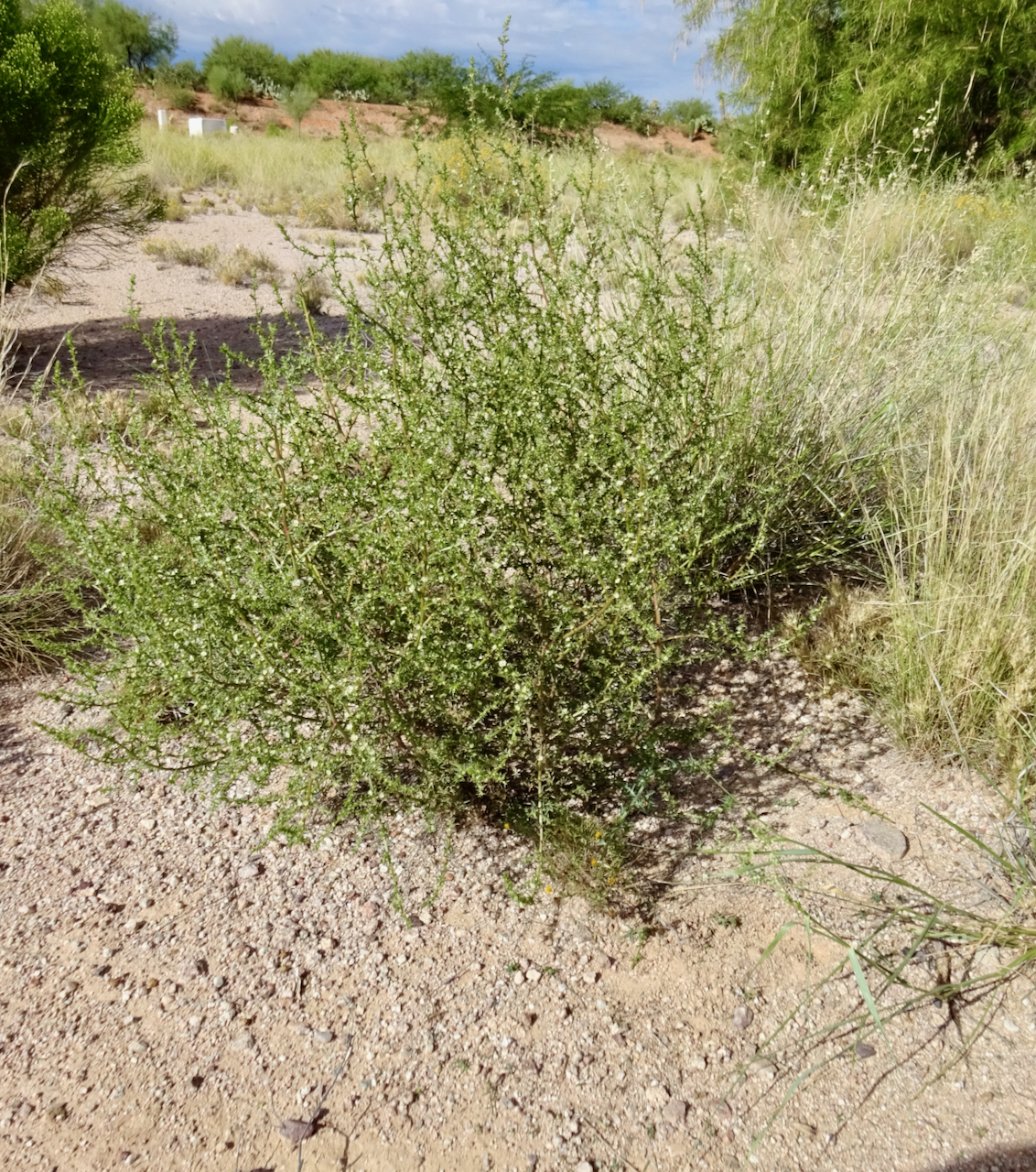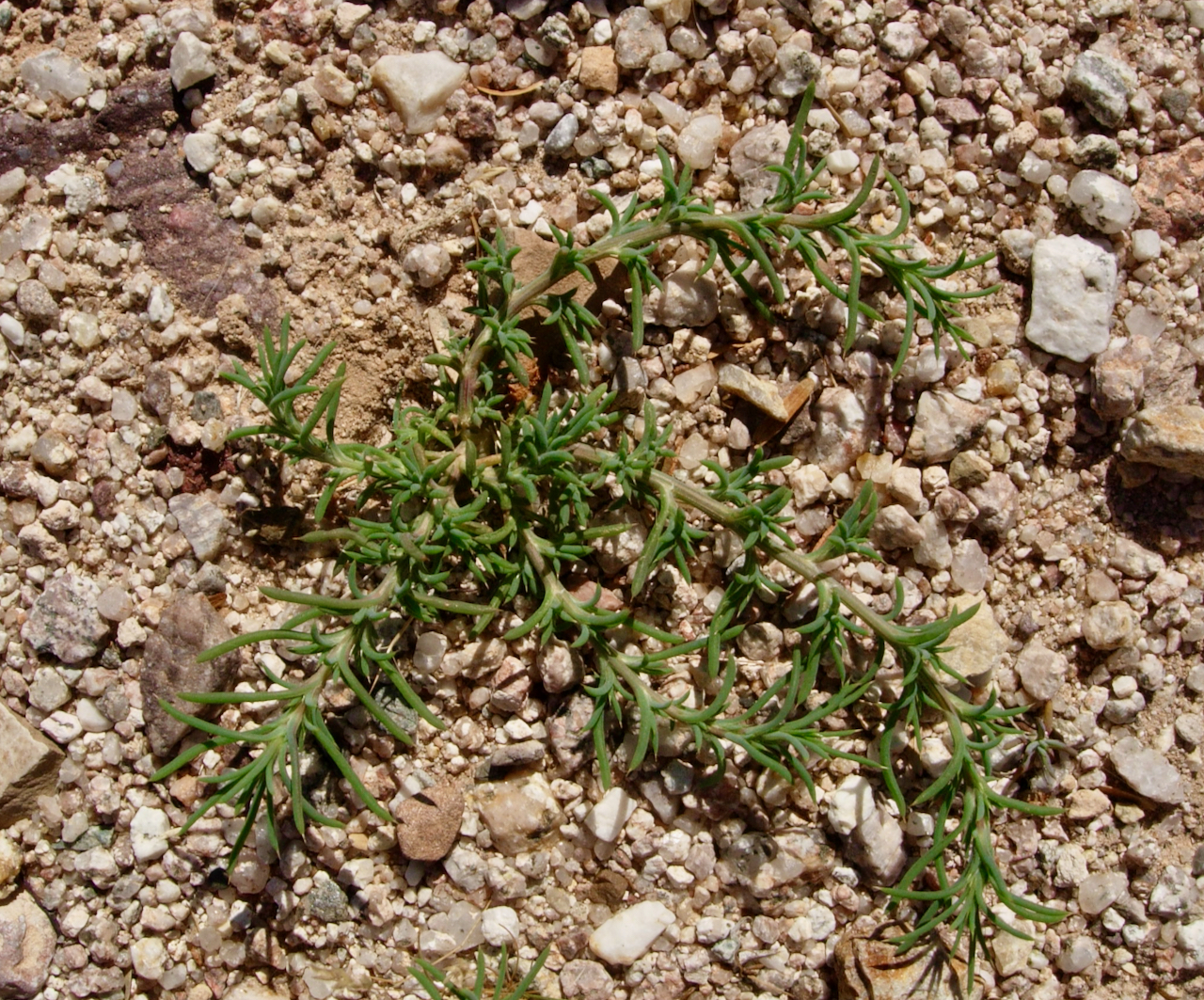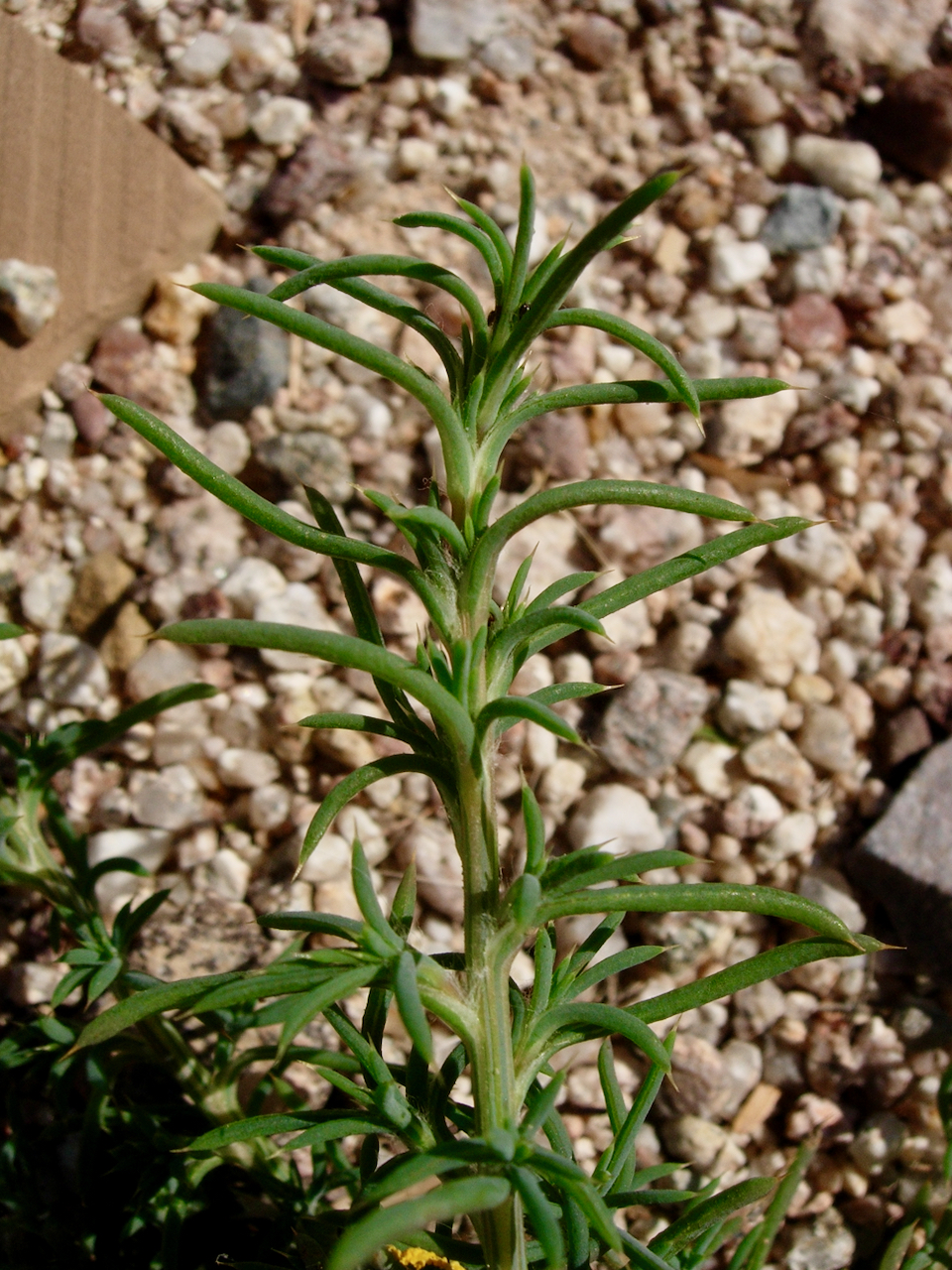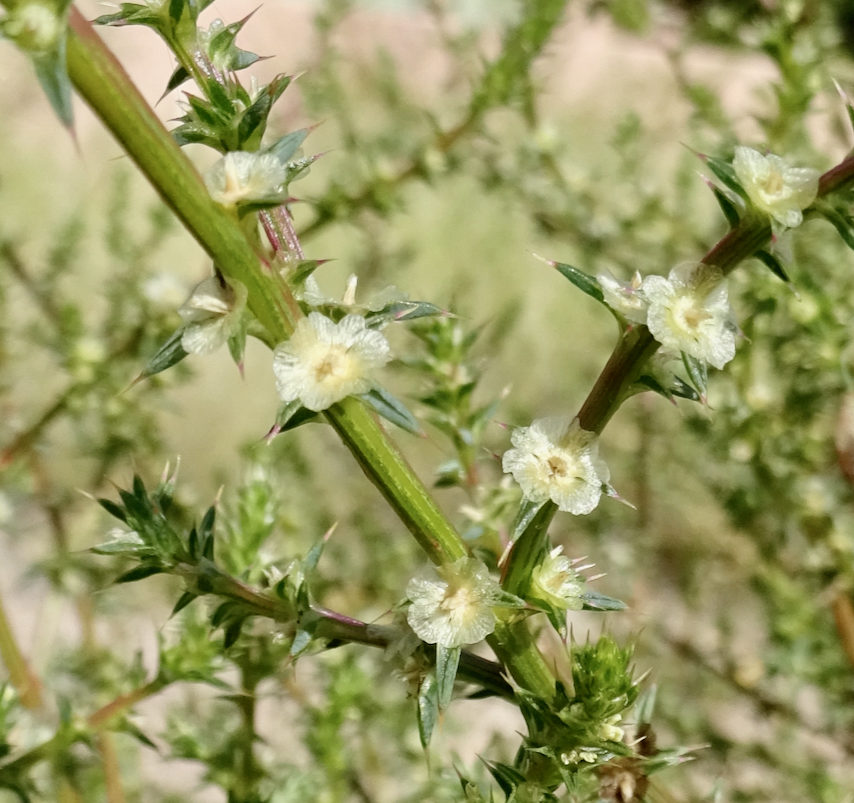Russian Thistle
Salsola species
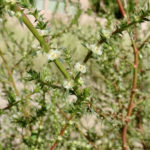
About the Plant
Russian thistle is considered an invasive plant and a nuisance plant but it is not a noxious weed in Arizona (Arizona Noxious Weeds List).
Russian thistle is an annual known to most people in its tumbleweed form, large spheres of tangled branches that roll across the ground releasing seeds. Tumbleweeds get caught in fences and car grills and the branches of other plants. The tumbling plants can be quite a nuisance, causing car accidents and posing a serious fire hazard.
Russian thistle seeds germinate best in disturbed, loosened soils with little plant cover. In dry years, they can out-compete native plants but do less well when moisture is adequate and other plants shade the soil. However, Russian thistle is a poor competitor and is often replaced by other vegetation after a few years. It requires frequent disturbance, as is often found in residential areas and farm fields, to maintain its population.
Seeds of Russian thistle usually germinate in spring, by April, and the plants mature in late summer to fall. When mature, the plant breaks cleanly at its base, resulting in a mass of branches that tumbles with the wind.
Seeds that do not germinate the first year typically do not survive more than two years. Thus, in a residential situation, removal of young plants for two or three years can eliminate Russian thistle infestation. However, any time the soil is disturbed for building or landscaping or there is constructive traffic, new Russian thistle seeds may be introduced. Disturbed areas should be monitored for two years and any Russian thistle seedlings promptly removed.
Notes:
- The scientific names for Russian thistle are mired in confusion. The seeds accidently brought to the US in the 1870s were probably a mix of several species and possibly some hybrids. This group of plants has been known as Salsola tragus, Kali tragus, Salsola kali, Salsola iberica, and Salsola australis. A 2017 decision by the XIX International Botanical Congress retains Salsola (rather than Kali) as the genus but there is still uncertainty at the species level.
- Russian thistle is palatable when young. Russian thistle hay production is credited with saving the beef cattle industry in the US and Canada during the Dust Bowl years when conventional crops failed.
- Russian thistle is found in every state in the US except Florida and Alaska as well as in southern Africa and South America, especially in arid, semi-arid and disturbed areas. Native to Eurasia, Salsola species range from northern Africa through Saudi Arabia and Pakistan to Ukraine, northeast China and Southeast Siberia.
Wildlife value:
Livestock, deer, elk, and pronghorn antelope will eat young plants. Seeds are eaten by some birds and small mammals. It is a host plant for western pygmy blue butterfly.
More Information
How to identify Russian thistle
Information from UC Integrated Pest Management Program
Technical botanical description from SEINet for Salsola tragus; for Salsola kali.
